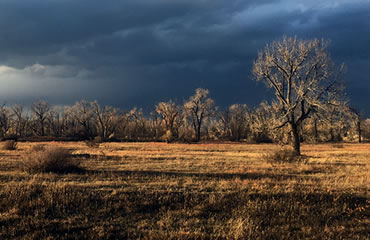Controlled fire is the most under-used habitat tool, but maybe that's not a bad thing.
Now that we no longer depend on fire to keep us alive every day, most of us look on it as something that destroys. Fire certainly can destroy, and few images are more heart-wrenching than those of a family watching their home and possessions being reduced to smoking ash.
Fire also destroys in nature, but quite often that destruction leads to new growth – growth that is highly palatable and beneficial to white-tailed deer as both food and cover.
Fire removes less desirable understory and trees, and it also burns off matted thatch that prevents new growth. Done properly, a controlled burn accomplishes these benefits without harming more mature and desirable trees.
The benefits are great, but so is the danger, at least for the vast majority of us who have little or no experience with large fires. The risk is cut to almost nothing with the supervision of a burn expert. These professionals also know the laws, can handle any permit requirements and will tell you when conditions are right to conduct your burn.
You probably won't find controlled burn experts in the Yellow Pages (c'mon, some of you still have a phone book and use it), but a good place to start is your local Cooperative Extension office.
Partners of land-grant colleges and universities, cooperative extension offices bring the expertise of scientists and researchers to regular people. They're especially helpful in all matters of habitat and growing, which includes topics like food plots, deer habitat and controlled burns, just to name a few of interest to hunters.
Visit this link, scroll down and click on your state to find information about extension services available near you.
Your cooperative extension agents might not be able to provide some services directly, but they can steer you to other professionals when that's the case.
Read Recent Tip of the Week:• Less Is More: Forget shooting lanes and cut shooting windows instead.




.png)